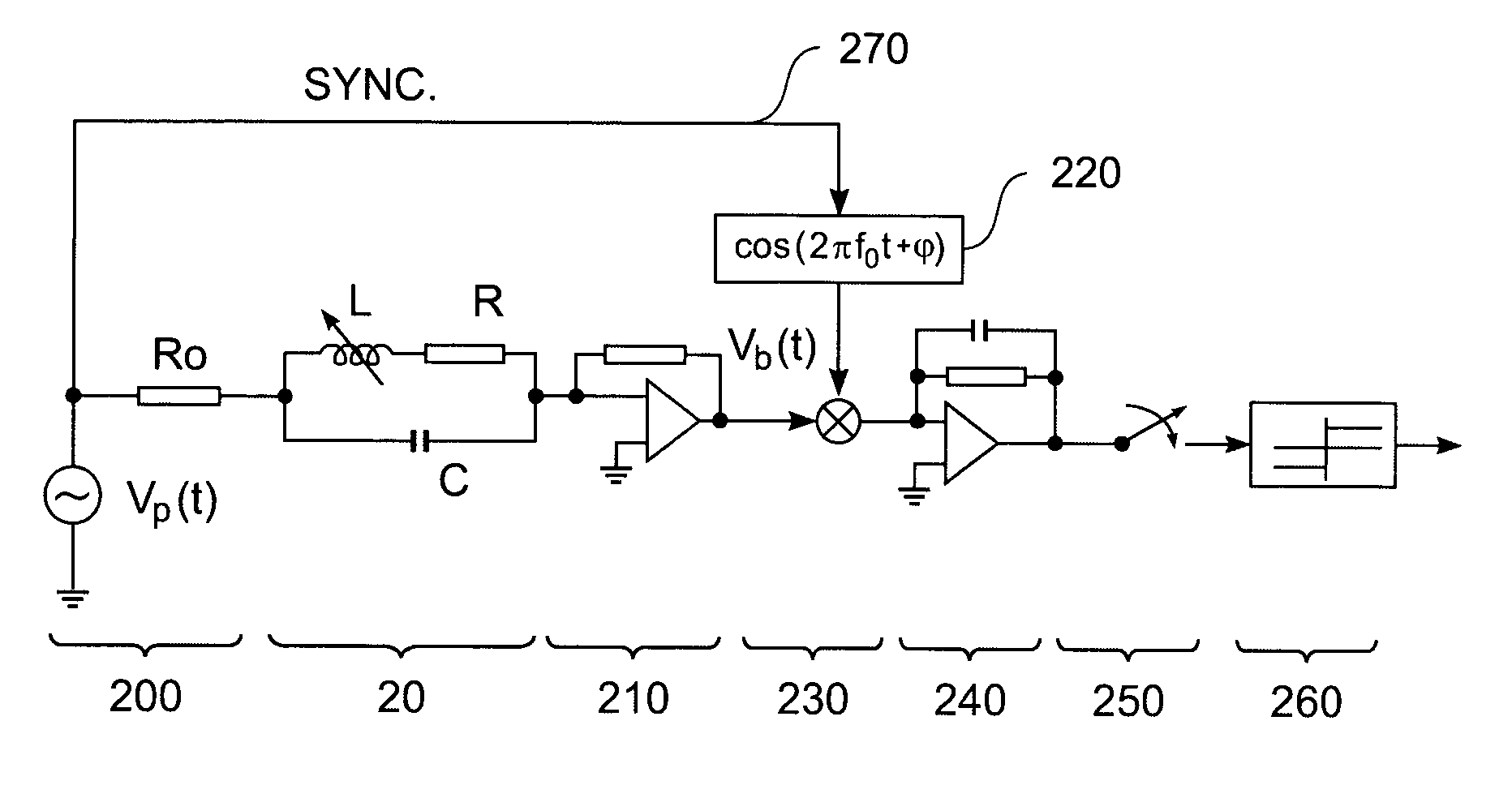Reading data in probe-based storage devices
a data storage device and data technology, applied in the field of methods and apparatuses, can solve problems such as the limit of achievable data rate, and achieve the effect of higher data ra
- Summary
- Abstract
- Description
- Claims
- Application Information
AI Technical Summary
Benefits of technology
Problems solved by technology
Method used
Image
Examples
Embodiment Construction
[0023]Referring first to FIG. 1 an example of a probe storage device embodying the present invention comprises a substrate 10 having a two dimensional array 120 of probe cantilever sensors 20 facing a storage surface 30. The cantilevers 20 are connected to row conductors 40 and column conductors 50. Each cantilever 20 is addressed by a different combination of a row conductor 40 and a column conductor 50. The row conductors 40 are selectively addressed via a row multiplexer 60. Similarly, the column conductors 50 are selectively addressed via a column multiplexer 70. The storage surface 30 is mounted on a scanner mechanism comprising an x position transducer 80, a y position transducer 90 and a z position transducer 100. In operation, the z transducer 100 moves the storage surface 30 towards or away from the array 120. The x transducer 80 and the y transducer 90 move the storage surface 30 in orthogonal directions relative to and within a plane parallel to the array 120. The transdu...
PUM
| Property | Measurement | Unit |
|---|---|---|
| temperature | aaaaa | aaaaa |
| inductance | aaaaa | aaaaa |
| diameter | aaaaa | aaaaa |
Abstract
Description
Claims
Application Information
 Login to View More
Login to View More - R&D
- Intellectual Property
- Life Sciences
- Materials
- Tech Scout
- Unparalleled Data Quality
- Higher Quality Content
- 60% Fewer Hallucinations
Browse by: Latest US Patents, China's latest patents, Technical Efficacy Thesaurus, Application Domain, Technology Topic, Popular Technical Reports.
© 2025 PatSnap. All rights reserved.Legal|Privacy policy|Modern Slavery Act Transparency Statement|Sitemap|About US| Contact US: help@patsnap.com



